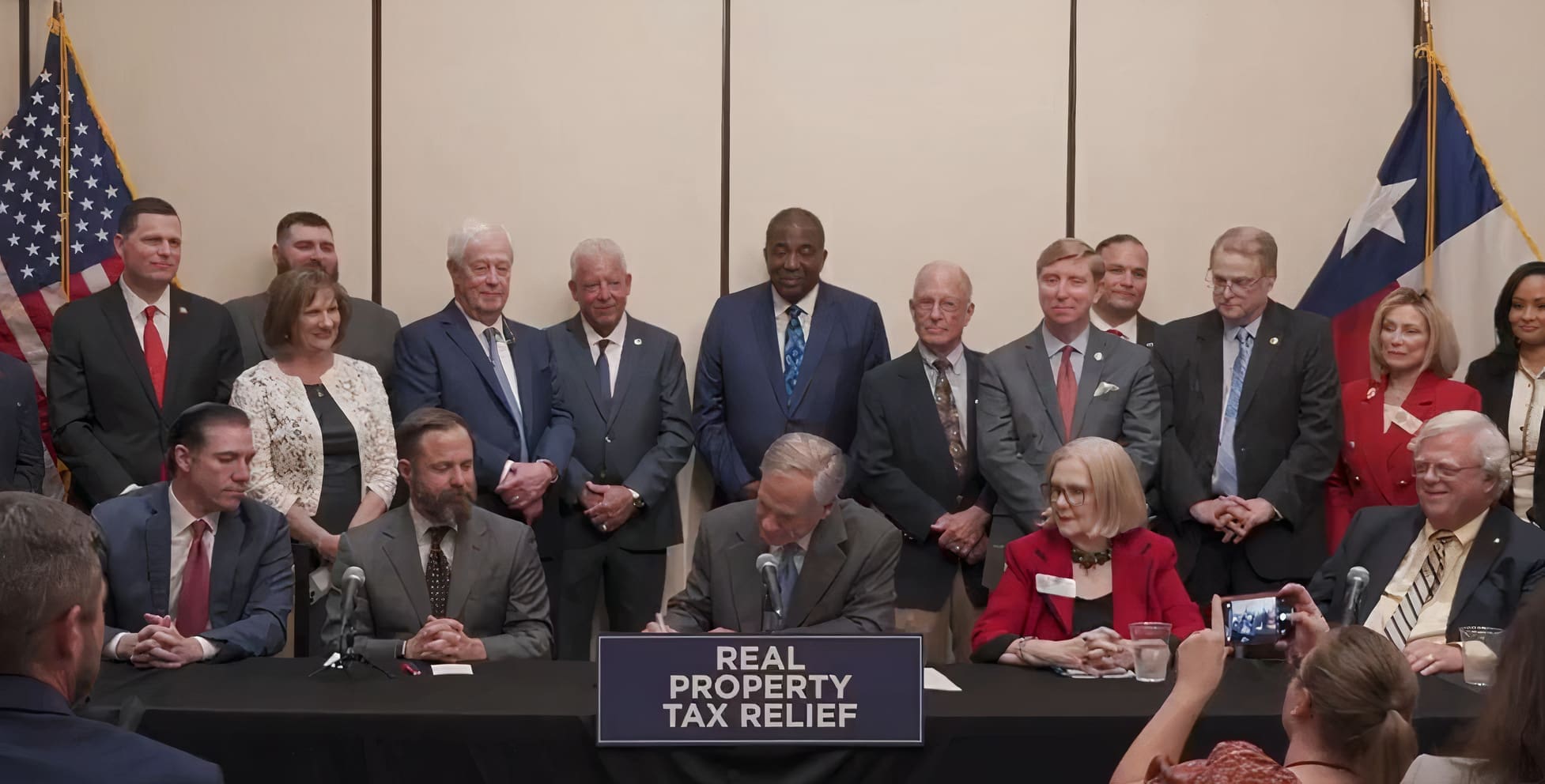A Republican plan to buy down school property taxes, using surplus money in the state budget, passed the Texas Senate today with overwhelming bipartisan support.
Senators approved the property tax relief measure by a vote of 30-1.
“These are taxpayers’ funds; they belong to the taxpayers,” said State Sen. Paul Bettencourt (R–Houston), who authored Senate Bill 1 (not to be confused with the election reform bill passed during the second special session—bill numbering restarts every session).
Bettencourt said in a committee hearing Tuesday that returning excess revenue to taxpayers is “a critical conservative view.”
In addition to a one-time tax cut for every Texas property owner, the bill temporarily limits how much school districts can tax local property owners to pay for spending they finance with taxpayer-backed debt.
One-Time Savings for Taxpayers
SB 1 is a temporary measure to reduce school tax rates by replacing local dollars with state dollars for the 2022-23 school year.
The bill guarantees at least $2 billion in property tax relief. That will save owners of a home with the median value of $330,000 about $188 on their 2022 tax bill.
Total tax relief could double, depending on the state comptroller’s estimate of surplus general revenue in 2022, with up to $4 billion returned to taxpayers in the form of “compressed” rates.
Each billion dollars of compression lowers school maintenance and operations (M&O) tax rates by 3.3 cents.
At the current estimated revenue of $11.3 billion (a surplus of $3.5 billion), Bettencourt said savings for the median homeowner would be about $330.
“If we can have a higher certification, it can certainly be an eye-popping amount of tax savings,” he added.
Temporary Tax Limits for School Districts
The Legislature can’t control how much school districts spend, but they can put limits on how much districts can tax local property owners to pay for their spending.
To make sure the tax relief goes to the taxpayers as intended—instead of districts taking advantage of the state’s M&O buy-down to significantly increase the amount they tax to pay for spending financed by bond debt, as happened when the Legislature compressed rates in 2006—Bettencourt added a one-year limitation on the total tax rate school officials can impose.
“We’re tightening our belts by one notch, for one year,” he said. “We don’t want to incentivize districts to raise I&S rates.”
SB 1 says school district may not adopt a total tax rate, including both M&O and the interest and sinking (I&S) rate for taxes used to repay debt, that exceeds the district’s voter approval rate for the 2022 tax year.
State law limits school districts’ I&S rate to $0.50 per $100 valuation. When voters approve a bond proposition, they’re also approving whatever property taxes are needed to repay the debt, with interest.
SB 1 adds another layer of taxpayer protection.
“We don’t want taxpayers to see a reduction in M&O and the exact same increase in I&S,” Bettencourt said.
State Sen. Larry Taylor (R–Friendswood) said he thought House Bill 3, passed in 2019, gives taxpayers sufficient opportunity to reject higher I&S taxes by requiring ballot propositions for school bonds to include the words, “This is a property tax increase.”
“Because it is!” Taylor said. “If you don’t vote for the bonds, your taxes will be much less.”
State Sen. Charles Perry (R–Lubbock), who supported the I&S tax rate limit, said districts with current plans to issue bond debt should not be adversely affected.
“Our intent was not to change the rules of the game in the middle of it,” he said.
Transparency
SB 1 also requires a notice to taxpayers showing the amount of taxes they saved due to the state buy-down, as well as stating the cut applies only to their 2022 tax bill.
State Sen. Chuy Hinojosa (D–McAllen) asked to include that the tax cut is coming from the state Legislature, not local school officials.
“Local taxing authorities take credit for the work we do,” he said.
A Better Bill
Bettencourt filed a similar bill during the second special session that passed the Senate by a vote of 29-2, but the bill didn’t make it through the House. That version did not include the added taxpayer protection against districts raising I&S tax rates to fund new debt-financed spending.
On Tuesday, State Rep. Tom Oliverson (R–Cypress) filed even stronger property tax relief legislation, House Bill 90, that establishes a permanent formula for buying down school district M&O property taxes with surplus state revenue.
The House is scheduled to reconvene on Thursday and begin assigning bills to committees. After the bills are referred, HB 90 can receive its first public hearing and the House can also consider SB 1.
The bills are priorities for Lt. Gov. Dan Patrick and House Speaker Dade Phelan.
On Wednesday morning, Gov. Greg Abbott added property tax relief to his agenda for the ongoing third special legislative session.





